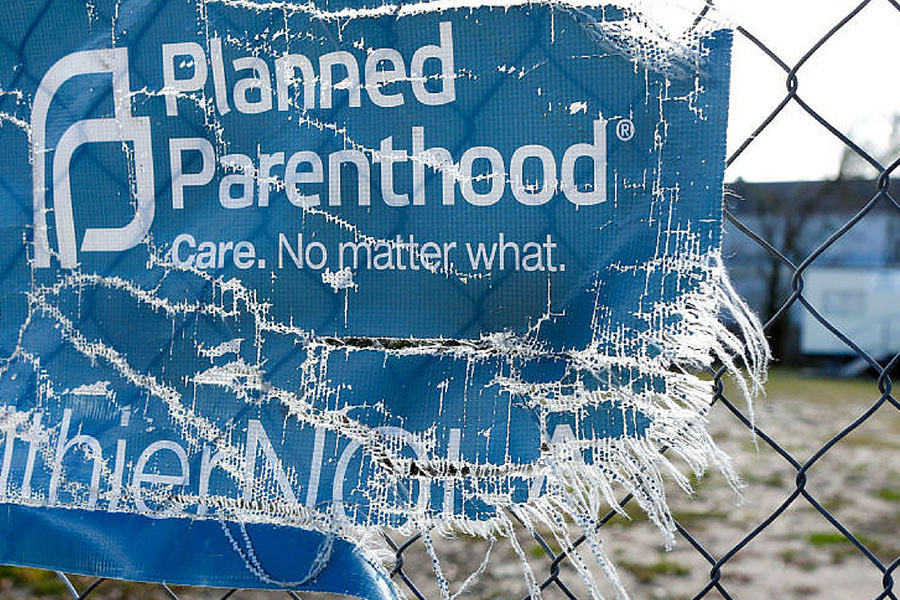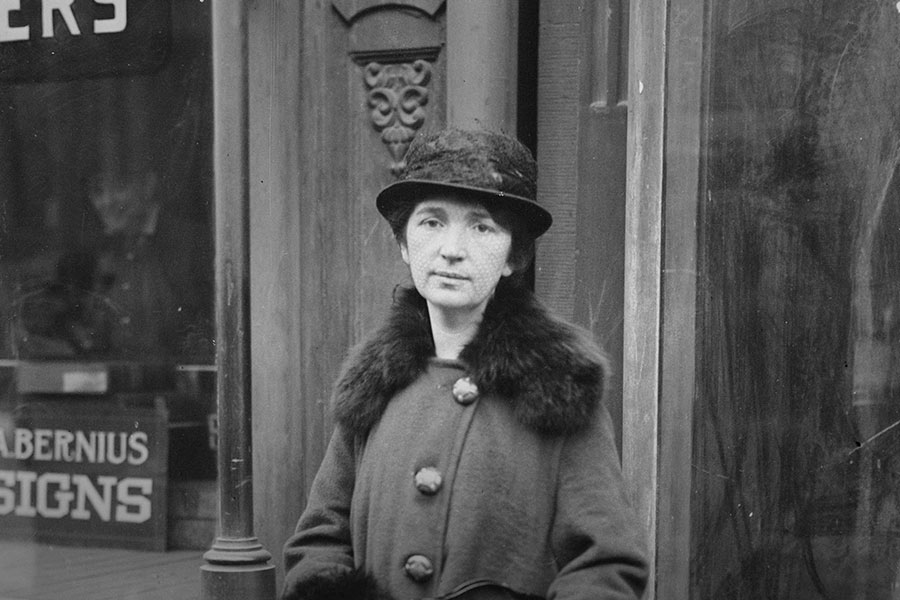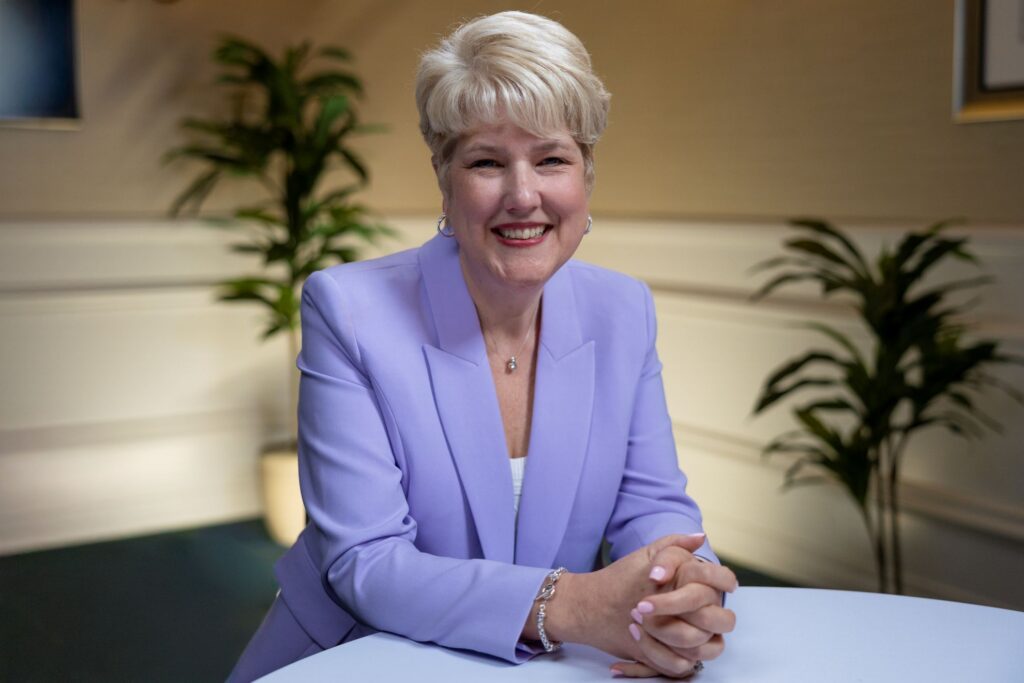
Planned Parenthood (noun) – an organization that has taken nearly 10 million lives through abortion since 1973.
Let that sink in.
Of the more than 61 million abortions that have taken place since 1973, Planned Parenthood is responsible for nearly 10 million of them.
That’s nearly 10 million children who never knew what it meant to be loved outside their mother’s womb; nearly 10 million children who never got to grow up, experience the joys and hardships of life, and potentially change the world; and an untold number of women who were led to believe that abortion was their only option.
People deserve to know the truth about Planned Parenthood. It is long overdue for this organization to be held accountable.
What is Planned Parenthood?
On its website, Planned Parenthood styles itself as a “trusted health care provider, an informed educator, a passionate advocate, and a global partner helping similar organizations around the world. Planned Parenthood delivers vital reproductive health care, sex education, and information to millions of people worldwide.”
In truth, what Planned Parenthood calls “health care” mostly consists of life-ending abortions. Planned Parenthood is, in fact, the largest provider of abortions in America today, and it has been for many years.
And what Planned Parenthood calls “sex education” refers to programs that include encouraging children to engage in all manner of sexual exploration and risky sexual behaviors, circumventing and alienating their parents. Ultimately, this “sex education” creates lifelong customers who will come to Planned Parenthood for contraception, STD tests, and abortions. And now, Planned Parenthood is featuring “information” about sexual orientation and gender identity, even offering so-called “gender affirming hormone therapy” and other such “services.”
Planned Parenthood doesn’t just push these policies in America, either. It also promotes them globally, especially to developing nations.
The history of Planned Parenthood
From its eugenic past to its present abortion schemes, Planned Parenthood has demonstrated a pattern of devaluing life and treating it like a commodity.
Who founded Planned Parenthood?
Planned Parenthood was founded by Margaret Sanger, a nurse who made it her life’s mission to bring birth control into the mainstream of society. In 1916, along with her sister Ethel Byrne and activist Fania Mindell, she opened America’s first “birth control clinic” in Brooklyn, New York. That clinic was shut down days later for violating federal law.

Eventually, Sanger founded the American Birth Control League in 1921 and the Birth Control Research Bureau in 1923. These organizations merged to form the Birth Control Federation of America in 1939. After the events of Nazi Germany made the language of eugenics and population control unpopular (language often used by Sanger and advocates of birth control), the Birth Control Federation of America changed its name to the Planned Parenthood Federation of America in 1942.
Margaret Sanger and eugenics
For decades, Planned Parenthood has struggled with its founder’s support for eugenics, which it now describes as “an inherently racist and ableist ideology.” Eugenics is an ideology that seeks to “improve” humanity through selective “breeding.” Eugenic practices involve using birth control, forced and voluntary sterilization, and other methods to weed out “undesirable” traits such as mental illnesses and physical disabilities, or to reduce the populations of specific demographics such as African Americans.
It’s well known (and admitted by Planned Parenthood) that Margaret Sanger spoke to a Ku Klux Klan group to gain support for birth control, supported the Supreme Court’s Buck v. Bell decision allowing the sterilization of people deemed “unfit” without their consent, and conducted experimental birth control pill trials on hundreds of Puerto Rican women without telling them of the drug’s experimental nature or potentially dangerous side effects.
In 2021, Planned Parenthood president Alexis McGill Johnson published an op-ed in The New York Times titled in part, “We’re done making excuses for our Founder.” But McGill Johnson also wrote that “the facts are complicated” and “whether our founder was a racist is not a simple yes or no question.”
Regardless of whether Planned Parenthood fully owns up to the reprehensible beliefs of its founder, what is clear is Sanger’s legacy. It isn’t an accident that Planned Parenthood facilities are located disproportionately in neighborhoods with high numbers of racial minorities. It isn’t an accident that a radical commitment to eugenics and birth control turned into a radical commitment to abortion and ending unborn life.
What does Planned Parenthood do?
Planned Parenthood’s stated mission is to “provide the high-quality inclusive and comprehensive sexual and reproductive health care services all people need and deserve — with respect and compassion.”
While the organization tries to portray itself as providing holistic healthcare to women, its primary goal is clear: to be America’s number-one abortion provider.
And the numbers speak for themselves.
According to Planned Parenthood’s 2022-2023 Annual Report, the organization performed 392,715 abortions between Oct. 1, 2021, and Sept. 30, 2022. This represents a 5 percent increase from the previous year and an increase of over 70 percent in just two decades.
Planned Parenthood likes to boast of the other services that it provides, such as cancer screenings. But again, the abortion provider’s own annual reports show where its priorities lie.
In the 2022-23 report, Planned Parenthood revealed that it performed less than a quarter of the total number of cancer screenings it had performed 15 years before. Even using its own flawed statistics, cancer screenings and prevention encompass only 5 percent of “services provided” between 2021-2022.
The same trend can be observed in Planned Parenthood’s contraceptive services. During the same 15-year span, the number of contraceptive services the organization provided decreased from about 3.9 million to 2.25 million. Besides abortion, the only other major category of services offered by Planned Parenthood that substantially increased was testing for sexually transmitted diseases and infections (from 3.35 million to 4.6 million).
But one of the most telling statistics reported by the Charlotte Lozier Institute is that in Planned Parenthood’s 2022-23 annual report, “abortions made up 97.1% of Planned Parenthood’s pregnancy resolution services, while prenatal services, miscarriage care, and adoption referrals accounted for only 1.6% (6,316), 0.9% (3,604), and 0.4% (1,721), respectively.” In other words, Planned Parenthood performed 228 abortions for every adoption referral.
When it comes to unborn children, Planned Parenthood seeks to end life, not preserve it, and the organization’s own numbers reveal that it is far more concerned about driving women to its profit-making and life-ending abortions over providing them with actual health services.
What percent of Planned Parenthood business is abortion?
To rebuff these glaring statistics, Planned Parenthood has repeatedly claimed that abortion only consists of 3 to 4 percent of what it does. But even left-leaning magazines such as Slate have called that “The Most Meaningless Abortion Statistic Ever,” and The Washington Post has called it “misleading.” Listen to former Planned Parenthood clinic director Abby Johnson describe how Planned Parenthood “counts” its “services.”
Planned Parenthood and sex education
One of the ways that Planned Parenthood ensures a future customer base is by seeking to influence children and teenagers through sex education and by being present in schools.
In 2021, a teacher at a middle school in Tacoma, Washington, distributed Planned Parenthood flyers to eighth-graders. The flyer detailed at what age students could give consent to have sex with someone younger or older. For example, it says, “It is not a crime if you are … 11 and have sex with somebody 2 years older or less … 12 to 13 and have sex with somebody who is 3 years older or less … 14 or 15 and have sex with somebody who is 4 years older or less.” Additionally, the flyer tells students at what age they can obtain abortions, birth control, and STD tests without parental notice or consent.
On high school campuses, Planned Parenthood has also sought to establish “Wellbeing Centers” that “provide a range of sexual health services,” including “pregnancy options counseling.” The organization also supplies schools with free condoms that are easily accessible to students.
In addition, Planned Parenthood has numerous online resources to provide “education” and circumvent parents. The section of its website devoted to reaching teens has articles on everything from sex and pornography to sexual orientation and gender identity, complete with videos like “Consent 101: How Do You Know if Someone Wants to Have Sex?” Many of the videos have explicit animations of various sexual acts, including the use of sex toys, or feature live people engaging in what could rightly be called softcore pornography.
In a video posted in January 2024 titled, “What is Virginity?”, Planned Parenthood declares to young people that virginity “is a completely made-up concept … that was created simply to control and shame people, mainly women.” A Planned Parenthood instructor further encourages people to be sexually active by suggesting that they won’t be “losing” anything, but rather “gaining things like intimacy, self-insight, pleasure, and empowerment.”
Planned Parenthood also has an app called Roo where kids can ask whatever questions they want about sexuality and be answered by Planned Parenthood’s chat bot or “experts.” This is yet another resource Planned Parenthood gives children to bypass their parents.
By exposing kids to explicit sexual material and encouraging them to be sexually active through its “sex education” Planned Parenthood can also create a loyal future customer base that will come back for contraception, STD tests, and abortions.
Planned Parenthood negotiating the sale of baby parts
In 2015, videos released by the Center for Medical Progress exposed Planned Parenthood for negotiating the sale of hearts, lungs, and livers from babies it had aborted. Planned Parenthood insisted that it was only recuperating the costs of procuring the babies’ bodies (it is illegal to obtain a profit from fetal tissue), but public pressure eventually led the organization to stop accepting payments altogether.
This action, of course, does not address the underlying horror of the abortions themselves or the perverse incentives such an arrangement might create.
Who funds Planned Parenthood?
Each year, Planned Parenthood releases an annual report laying out its revenues, expenses, and “services” it provides.
In its 2022-2023 Annual Report, Planned Parenthood reported over $2.5 billion in net assets, over $2 billion in total revenue, and over $1.8 billion in expenses.
The report details that $997.5 million (47 percent) of the organization’s revenue came from private contributions, up $302.6 million from the previous year. Planned Parenthood also received a hefty sum from American taxpayers: $699.3 million (34 percent). This is $29 million more than the previous year. What’s more, Planned Parenthood received $3.2 billion in direct public funding between 2018 and 2023.
The abortion giant uses taxpayer money to directly fund or free up money for its “programs,” which include “medical services” such as abortion ($1.1 billion), the perverse sex education described above ($50.1 million), and “public policy” including pro-abortion advocacy ($46.7 million).
Alliance Defending Freedom has long documented Planned Parenthood’s alleged scandals, including overbilling and taxpayer fraud to maximize its profits. The late Sue Thayer, a former Planned Parenthood clinic director and ADF client, offered practical examples of how this happens:
Abby Johnson shared her experience about how Planned Parenthood would try to get women in and out as quickly as possible to maximize profits:
At the end of the day, Planned Parenthood and other abortion businesses profit by killing innocent children. Innocent life should not be treated like a commodity. The hundreds of millions of dollars in federal funding that Planned Parenthood receives should be redirected to high quality, comprehensive healthcare options that do not profit from the sale of abortions.
How is ADF opposing Planned Parenthood?
For decades, ADF has stood up to Planned Parenthood in legislatures and courts to hold the abortion business accountable for the innocent lives it takes, for the harm it brings to women, and for other ways it violates or evades the law.
ADF has represented two former Planned Parenthood directors: Sue Thayer and Abby Johnson. Sue served as a center manager for Planned Parenthood of the Heartland clinics for 17 years before resigning after witnessing increasingly unscrupulous business practices that Planned Parenthood was engaged in. Abby was a Planned Parenthood center director in Bryan, Texas. After working with the organization for many years, she had a change of heart after witnessing an abortion. Since then, Abby has dedicated her life to spreading the truth about abortion.
In June 2022, the Supreme Court overturned Roe v. Wade in Dobbs v. Jackson Women’s Health Organization, allowing states to protect life once again. ADF has recently defended pro-life state laws against Planned Parenthood and other abortion businesses in numerous states across the country.
Medina v. Planned Parenthood South Atlantic
The Medicaid program is run by the federal government and administered by the states. One of the states’ responsibilities is to determine which medical providers are qualified to provide and receive payment for certain services. In South Carolina, state law prohibits the use of taxpayer funds to pay for abortions. Because money is fungible, funneling taxpayer funds to abortion facilities for any purpose indirectly subsidizes abortions. South Carolina’s governor issued an order declaring abortion facilities, including Planned Parenthood, unqualified to receive Medicaid funding if they continue performing abortions.
In response, Planned Parenthood and an individual plaintiff sued the state. ADF represented the director of the South Carolina Department of Health and Human Services in defending the state. In June 2025, the Supreme Court issued a decision allowing South Carolina and other pro-life states to direct Medicaid funding away from Planned Parenthood. The ruling freed states to direct the funding to comprehensive health care providers rather than entities that exist primarily to perform abortions.
Planned Parenthood South Atlantic v. Moore
Planned Parenthood, along with other abortion businesses and providers, challenged North Carolina’s prohibition on telemedicine abortions, a 72-hour informed-consent period, facility safety codes, the requirement that facilities provide patients with informed-consent information, and a law ensuring that an abortion only be performed by a licensed physician. When the lawsuit was filed, Roe was still the law of the land.
ADF represented North Carolina Speaker of the House Timothy Moore and Senate President Pro Tempore Phil Berger in defending the state’s laws, and after ADF’s intervention and the Supreme Court’s ruling in Dobbs, Planned Parenthood dropped its lawsuit in North Carolina.
Hodes & Nauser v. Kobach
Since 1997, a Kansas law has required abortion businesses to inform women about the risks of abortion, the prenatal and postnatal care that is available, the right to have an ultrasound and see her child, the right to withdraw consent before the abortion, and other important information about pregnancy. The law also provides a 24-hour waiting period to ensure that women have sufficient time to consider their abortion decision and that profit-minded abortion businesses do not pressure women into having an abortion.
But in 2023, Planned Parenthood and another abortion business challenged the law even though they had been complying with it for decades.
Unfortunately, a state district court issued an order allowing Planned Parenthood and other abortion businesses to temporarily block enforcement of the law while the case proceeds. ADF is serving as co-counsel alongside Kansas Attorney General Kris Kobach to defend Kansas’s pro-life, pro-woman law.
Conclusion
The culture we live in tells us that because of the immense pain, hardship, or heartache that can accompany pregnancy, choosing life is not always worth it. Planned Parenthood capitalizes on this pain and confusion, profiting from mothers who face excruciating circumstances and from the killing of their innocent unborn children through abortion.
But women and children are worth more than Planned Parenthood’s bottom line.
Life is a human right. Life is beautiful. Yes, life is challenging, but life is always worth it.




